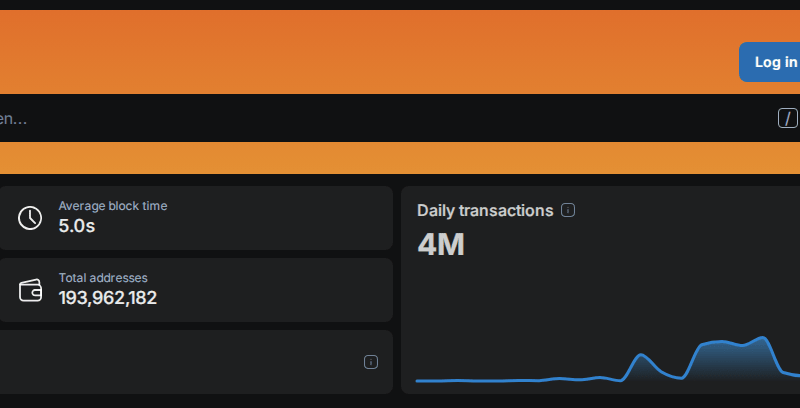Mindshare-driven, high-momentum bets are the future of crypto VC investing
The following is a guest post and opinion of Hatu Sheikh, the founder of Coin Terminal.
The traditional crypto VC investing model has failed. VC firms have returned to their drawing boards to strategically reorganize and optimally allocate funds in a highly competitive market.
Driven by cyclical market conditions, VCs have realized their success doesn’t depend on following a fundamental conviction. Instead, it hinges on investing in projects with dominant mindshare, strong narratives, and successful go-to-market (GTM) execution strategies.
Inspired by the recent rise of mindshare-led investments, VC investing is shifting from long-term to short-term, high-momentum bets.
Crypto VC investing landscape looks grim
Crypto VCs, who once shaped industry narratives with large capital reserves, have become weaker in recent years.
Multiple internal and external factors have been responsible for the subdued VC landscape.
According to a JP Morgan research report, regulatory uncertainty under the Joe Biden administration and enforcement actions against major companies by the U.S. Securities and Exchange Commission (SEC) had kept away VCs.
Further, the growth of crypto ETPs and institutional capital inflows from BlackRock and Franklin Templeton have diverted capital away from VC firms. Large investors like hedge funds and endowment agencies have gained exposure to crypto via liquid financial instruments rather than early-stage VC investing.
High interest rates have also lowered VCs’ risk appetite. This compromises investments in high-risk products with greater ROIs, although speculation and volatility are intertwined with crypto — they’re features, not bugs.
To top it off, standardized VC crypto funding is inherently broken.
The massive failure of VC-backed firms that funded projects in 2021-2022 has cautioned generalist VCs. The failure reflects a lack of a proper investment strategy rather than a dismissal of the industry itself.
Overall, capital allocation to venture funds has declined over the years. Crypto VC fundraising was the lowest in 2024 in the last five years, with just $5.1 billion raised.
Despite a bull market starting in the second half of 2024, VC investments have been inversely proportional to the success of the crypto markets. The liquid crypto market added $1.6 trillion to its total market cap in 2024, rising 88% YoY to $3.4 trillion. Yet, VCs invested just $11.5 billion in crypto startups.
The stark difference represents VCs’ pessimism and failure to understand the essence of crypto markets. While chasing fundamentals, VCs have forgotten to tap into the hottest meta and dominant market narratives. In turn, their shrinking capital reserves have flown into white elephant projects without substantial returns, making VC investing entirely unprofitable.
On the contrary, retail users who invested in categories occupying the highest mindshare and actionable real-world use cases have been immensely successful. VCs have a lot to learn from this retail-led investment strategy.
Mindshare-driven investing culture teaches important lessons
The JP Morgan report noted that several crypto startups have avoided token sales to VCs and turned to community-driven fundraising strategies in 2024. Community, the centerpiece of crypto, has thus reclaimed its space and shown VCs how to stay buoyant in cyclical market narratives.
Per a CoinGecko report, memecoins led the market mindshare and were “the most popular crypto narrative in 2024”. The memecoin market cap rose to $137 billion in December 2024, driven mainly by retail investors.
Critics have dismissed memecoins as a speculative fad. But memecoins have powered retail crypto adoption as a survey shows over 40% of people were first-time Trump and Melania tokens investors.
AI tokens, the second-most popular narrative in 2024, captured 16% of investor mindshare as retailers deployed capital for building futuristic financial technology. The AI token market capitalization can reach $60 billion in 2025, and early investors have an edge as the industry matures.
VCs have traditionally preferred fundamentals over mindshare-based investing because they believed the former translates to long-term dividends. As the data suggests, this is not necessarily the case.
The crypto industry moves quickly. Blindly following fundamental convictions without updating and acclimatizing to changing market conditions leads to a dead end.
VCs have finally realized their mistakes and are ready to shift gears. They’re now leveraging mindshare-based investment strategies to identify disruptive sectors and deploy capital for their growth.
Once VCs take cues from the dominant mindshare in a cyclical market, they can invest early in projects with robust GTM plans. Consequently, VCs can book profits when the sector develops and the projects launch consumer-facing apps with real-world uses.
Bloomberg suggests the “fintech winter” ended when VC funding was down due to high interest and strict regulations. With more regulatory clarity during the Trump regime, crypto VC funding will pick up pace with an estimated $18 billion in fresh capital inflows.
VCs should be wise enough to know how to use these funds. Instead of channeling them into dead fundamentals, they must follow a mindshare-driven investing approach to support early-stage innovations for profitable balance sheets.
As multiple narratives compete for limited mindshare in the crypto industry, VCs must know how to utilize their capital reserves. Mindshare-based investing offers a symbiotic alternative, benefitting the industry and VCs simultaneously.
The post Mindshare-driven, high-momentum bets are the future of crypto VC investing appeared first on CryptoSlate.


